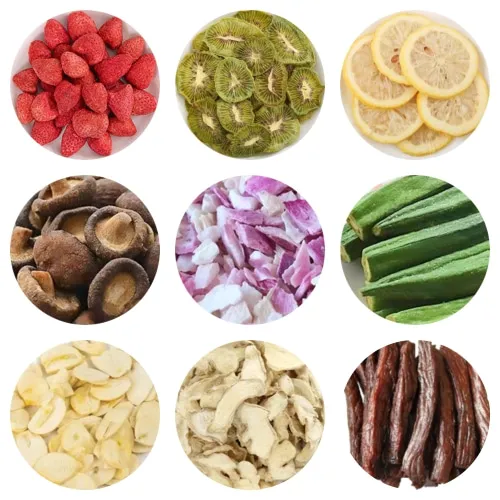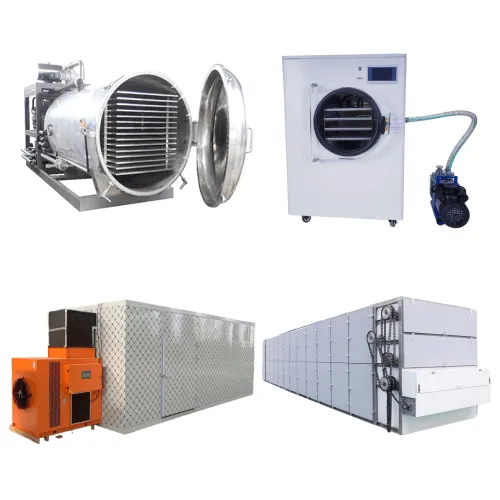Visual Signs of Perfectly Dried Peppers
Perfectly dried peppers develop a leathery texture with deep, even coloring, no moisture spots, and brittle stems that snap cleanly.
Drying peppers alters their appearance significantly, and recognizing these visual cues is essential for proper pepper preservation. Here’s how to identify ideal dryness:
- Color transformation: Fresh peppers fade to a darker, muted hue (red peppers deepen to burgundy, green ones turn olive-brown). Avoid peppers with black spots or uneven discoloration, as these may indicate improper drying.
- Texture change: The skin becomes tightly wrinkled, feeling papery or leathery to the touch. Any sticky or tacky areas suggest residual moisture.
- Stem test: Stems dry last. If they bend, the pepper needs more time; a crisp "snap" confirms perfect dryness.
- No moisture traces: When cut open, properly dried peppers should show no internal shine or softness. Discard immediately if white mold is present.
Thin-walled peppers (like cayenne) dry faster and may curl, while thicker varieties (like bell peppers) take longer and remain flatter. Sun-dried peppers often exhibit slight color variations, whereas dehydrators produce more uniform results.
Want to verify dryness by touch? The next section covers hands-on tests for double-checking your peppers.
Tactile Tests for Confirming Dryness
Perfectly dried peppers should feel brittle, snap cleanly when bent, and show no moisture when torn or squeezed. Under-dried peppers risk mold growth, while over-drying diminishes flavor. Here’s how to achieve ideal dryness using simple touch-based methods.
For safe storage, peppers must pass these tactile tests:
- Bend test: Fully dried peppers crack (not bend) when folded. Jalapeños should break cleanly at the stem.
- Tear test: Ripe chili skins tear crisply like paper, without rubbery or fibrous resistance.
- Squeeze test: Press thick flesh (e.g., bell peppers)—coolness or moisture means more drying time.
Key factors influencing tactile results:
- Pepper type: Thin-walled cayennes dry faster than dense habaneros. Adjust tests accordingly.
- Cutting method: Halved peppers dry more evenly than whole ones. Focus on the thickest sections.
- Temperature: Dehydrator-dried peppers (95°F/35°C) retain slight flexibility compared to sun-dried batches.
For accurate checks:
- Cool peppers to room temperature after dehydrating.
- Test multiple pieces, especially stems and cores.
- Store samples in a sealed jar overnight—condensation signals insufficient drying.
Now that you’ve mastered these touch tests, let’s explore how drying times vary by climate and pepper variety.
Average Drying Time and Key Influencing Factors
Peppers typically take 3-7 days to dry completely, though timing varies significantly depending on climate, pepper thickness, and the drying method you choose.
PAS: Not all peppers dry at the same rate—here’s what makes the difference.
Thin-walled peppers (like cayenne) may dry in as little as 3 days, while thicker varieties (like bell peppers) can take up to 2 weeks. The key factors affecting drying time include:
- Climate:
- Humid environments slow drying (add 2-3 extra days)
- Dry climates speed up the process (may finish in 2-4 days)
- Pepper type:
Thin-skinned (e.g. Thai chili) Thick-skinned (e.g. jalapeño) 3-5 days 7-14 days - Drying method:
- Sun-drying: 5-7 days (requires consistent sunlight)
- Dehydrator (135°F/57°C): 8-12 hours for perfect dryness
- Oven (lowest setting): 6-8 hours with the door slightly open
Pro tip: Rotate peppers every 12 hours for even drying, especially when using natural methods like sun-drying.
Want to know exactly when your peppers are ready? The next section covers foolproof drying indicators to help you master pepper preservation.
The Essential Guide to Proper Drying for Pepper Preservation
Properly dried peppers prevent mold growth, extend shelf life up to 1 year, and preserve peak flavor by eliminating moisture - the primary cause of spoilage.
The Challenge: Fresh peppers contain 80-90% water content, making them prone to rapid spoilage. The Risk: Without proper preservation methods, mold develops within days while flavor compounds degrade. The Solution: Effective drying reduces moisture below 10%, creating an environment where bacteria and molds cannot thrive.
The science behind perfect dryness works through two key mechanisms:
- Microbial prevention - Most spoilage organisms require over 15% moisture to grow. Achieving optimal drying indicators stops these microorganisms completely.
- Chemical stabilization - Enzymatic reactions that degrade flavor become inactive when water activity falls below 0.6aW.
For maximum preservation benefits:
- Shelf life comparison:
Method Shelf Life Flavor Retention Fresh 5-7 days 100% (but spoils quickly) Refrigerated 2-3 weeks 70% Properly dried 6-12 months 85-90% - Critical moisture levels for pepper preservation:
- 20% moisture: Mold risk begins
- 15%: Minimum threshold for short-term storage
- <10%: Ideal for long-term shelf stability
Pro tip: For best results, store your dried peppers in airtight containers with oxygen absorbers - this maintains quality and prevents rehydration. Our next section will explore the most effective drying methods to achieve these preservation targets consistently.
Best Drying Methods for Optimal Results
Preserve your peppers perfectly with these top drying techniques—sun-drying, dehydrators, and oven-drying—each offering unique advantages in speed, consistency, and flavor retention.
Choosing the right pepper drying method depends on your climate, available equipment, and desired outcome. Here’s a detailed comparison to help you achieve perfect dryness:
-
Sun-Drying
- Best for: Hot, dry climates (humidity below 60%).
- How to:
- Slice peppers thinly or leave whole (pierce skins for airflow).
- Arrange on mesh screens or hang in bunches.
- Cover with cheesecloth to deter insects.
- Rotate daily for even drying (typically 3–7 days).
- Pros: Cost-free, intensifies natural sweetness.
- Cons: Weather-dependent; mold risk in humid conditions.
-
Dehydrators
- Best for: Reliable, year-round pepper preservation.
- Settings: 125–135°F (52–57°C) for 8–12 hours.
- Pros: Fast, uniform drying; locks in vibrant color.
- Cons: Initial investment; uses electricity.
-
Oven-Drying
- How to:
- Set oven to lowest temperature (max 150°F/65°C).
- Spread peppers on parchment-lined trays.
- Prop door open 1–2 inches for ventilation.
- Check every 2 hours (total time: 4–8 hours).
- Pros: No specialized equipment required.
- Cons: Risk of overcooking; less energy-efficient.
- How to:
| Method | Time Required | Equipment Needed | Climate Sensitivity |
|---|---|---|---|
| Sun-Drying | 3–7 days | Mesh screens | High |
| Dehydrator | 8–12 hours | Dehydrator | None |
| Oven | 4–8 hours | Oven | Low |
For small batches, a dehydrator delivers foolproof results. Sun-drying shines for large summer harvests, while ovens work as a backup with careful monitoring.
Once dried, how do you confirm your peppers are ready for storage? The next section covers key drying indicators—like texture and flexibility—to ensure perfect preservation.



